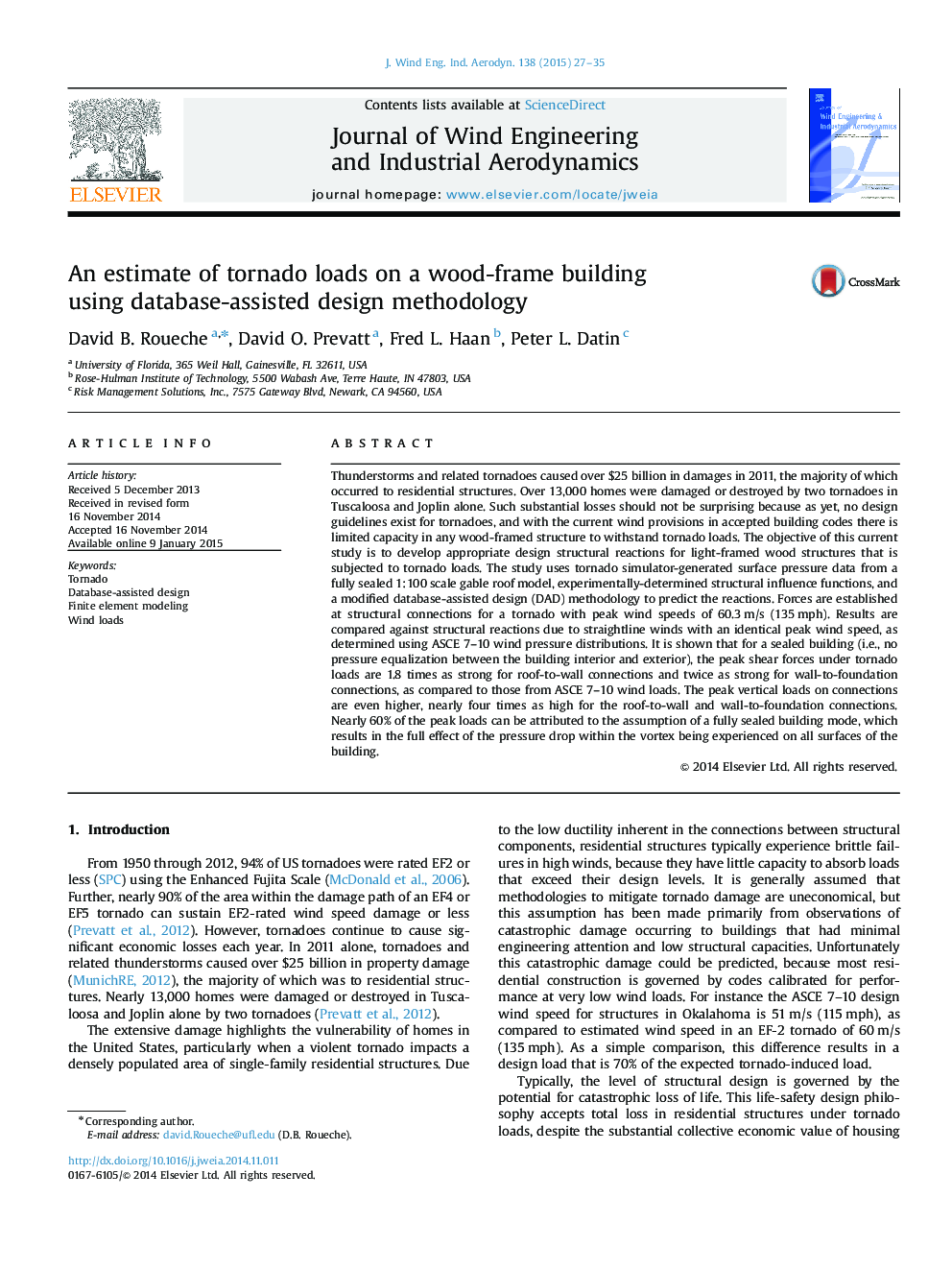| کد مقاله | کد نشریه | سال انتشار | مقاله انگلیسی | نسخه تمام متن |
|---|---|---|---|---|
| 292449 | 510883 | 2015 | 9 صفحه PDF | دانلود رایگان |
• DAD methods are used to develop design tornado loads for residential structures.
• The study assumes structures remain in the linear-elastic range to prevent damage.
• Tornado shear forces were better captured by ASCE 7–10 than uplift forces.
• Total tornado forces were 3 times higher than ASCE 7–10 forces.
Thunderstorms and related tornadoes caused over $25 billion in damages in 2011, the majority of which occurred to residential structures. Over 13,000 homes were damaged or destroyed by two tornadoes in Tuscaloosa and Joplin alone. Such substantial losses should not be surprising because as yet, no design guidelines exist for tornadoes, and with the current wind provisions in accepted building codes there is limited capacity in any wood-framed structure to withstand tornado loads. The objective of this current study is to develop appropriate design structural reactions for light-framed wood structures that is subjected to tornado loads. The study uses tornado simulator-generated surface pressure data from a fully sealed 1:100 scale gable roof model, experimentally-determined structural influence functions, and a modified database-assisted design (DAD) methodology to predict the reactions. Forces are established at structural connections for a tornado with peak wind speeds of 60.3 m/s (135 mph). Results are compared against structural reactions due to straightline winds with an identical peak wind speed, as determined using ASCE 7–10 wind pressure distributions. It is shown that for a sealed building (i.e., no pressure equalization between the building interior and exterior), the peak shear forces under tornado loads are 1.8 times as strong for roof-to-wall connections and twice as strong for wall-to-foundation connections, as compared to those from ASCE 7–10 wind loads. The peak vertical loads on connections are even higher, nearly four times as high for the roof-to-wall and wall-to-foundation connections. Nearly 60% of the peak loads can be attributed to the assumption of a fully sealed building mode, which results in the full effect of the pressure drop within the vortex being experienced on all surfaces of the building.
Journal: Journal of Wind Engineering and Industrial Aerodynamics - Volume 138, March 2015, Pages 27–35
